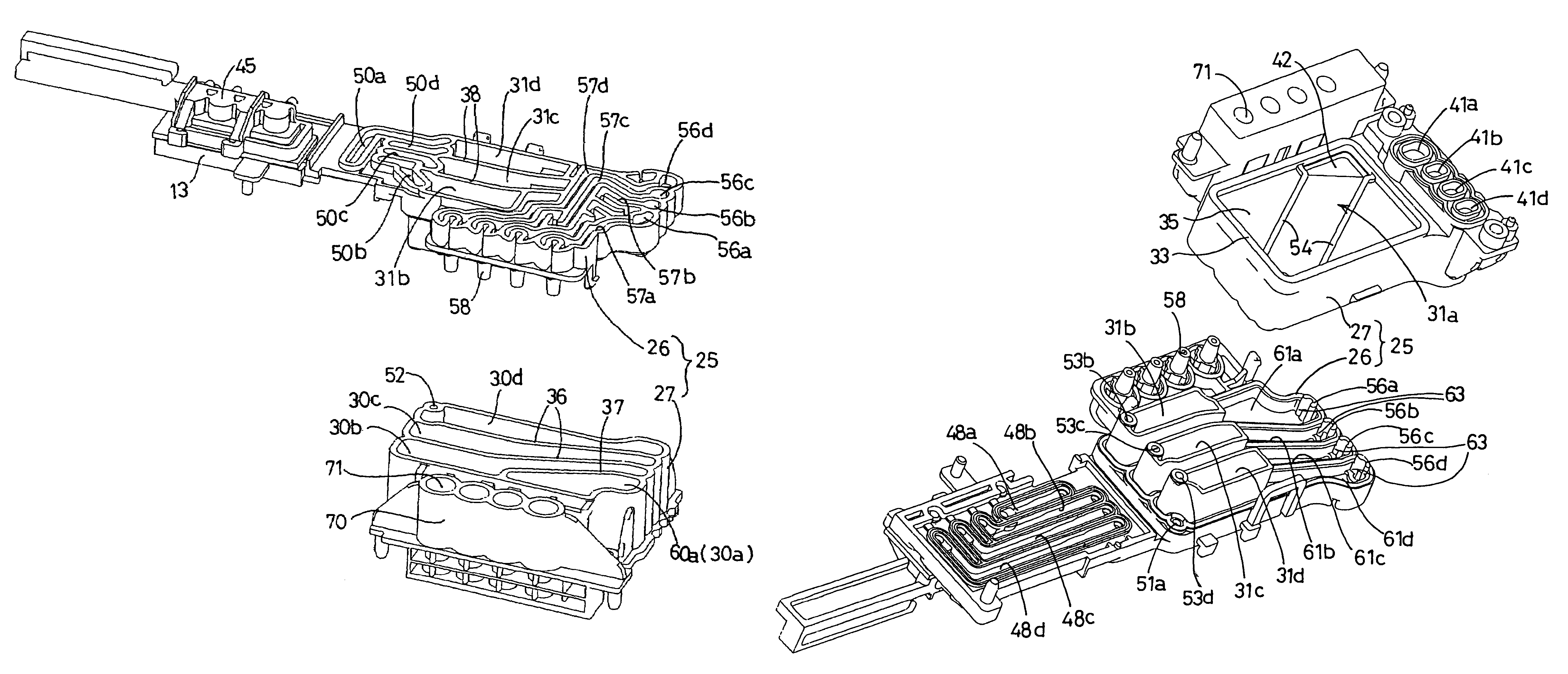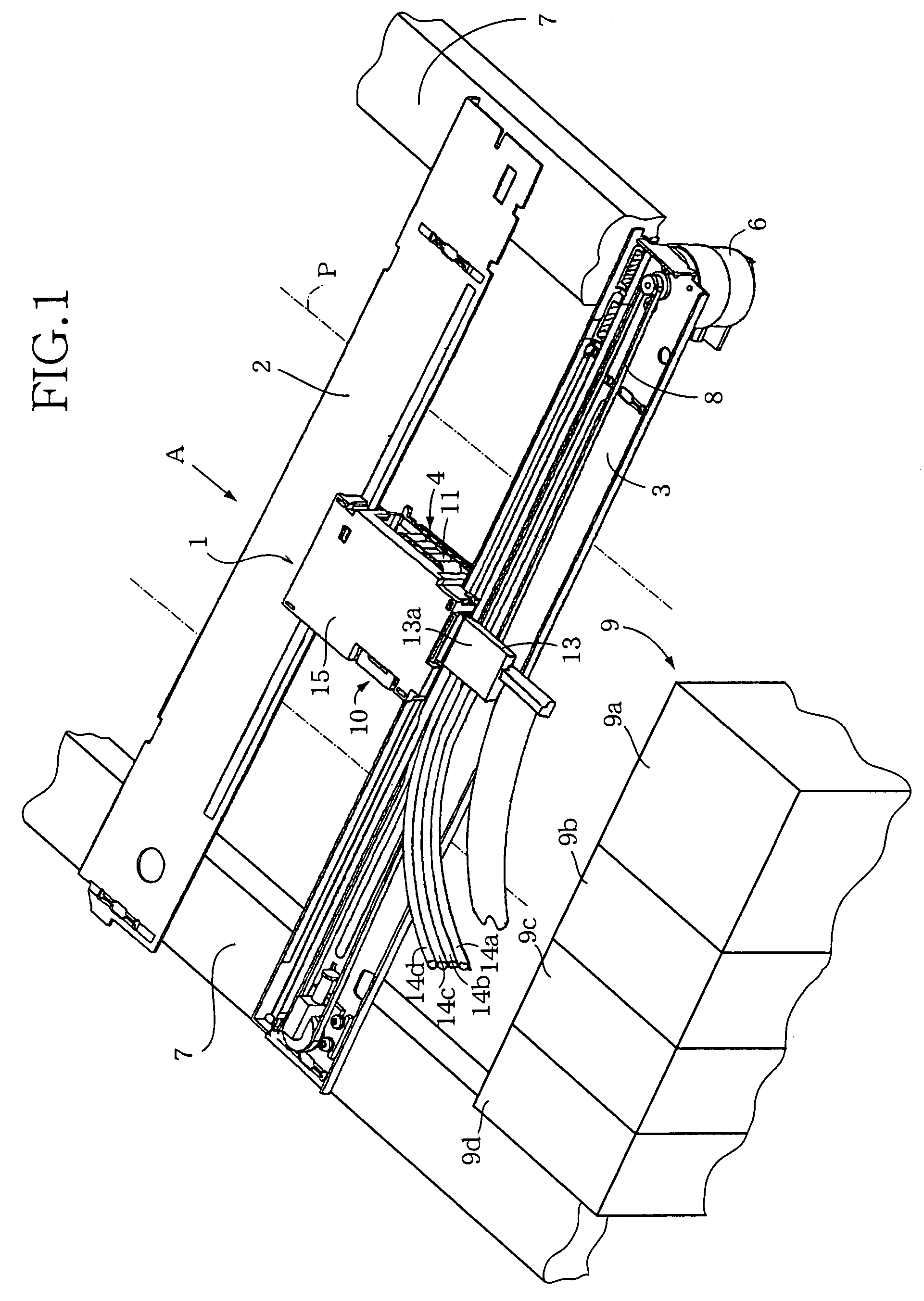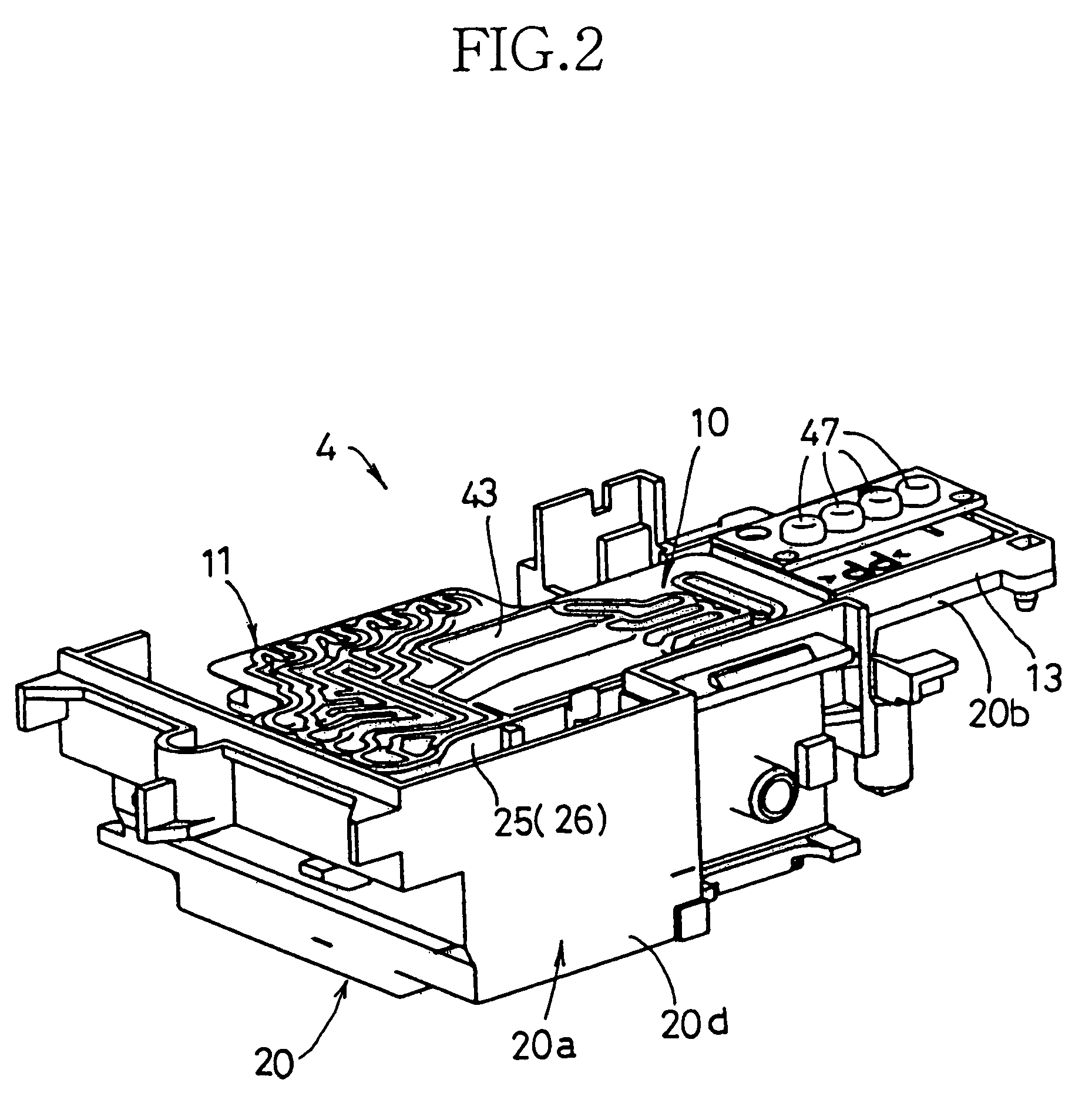Inkjet printer with delivery chamber
a technology of delivery chamber and printer, which is applied in the field of inkjet printer, can solve the problems of increasing the size of the device to be mounted, increasing the manufacturing cost, and the damper unit equipped with the plurality of damper chambers suffering from these problems, and achieves the effects of short time, improved maneuverability, and compact siz
- Summary
- Abstract
- Description
- Claims
- Application Information
AI Technical Summary
Benefits of technology
Problems solved by technology
Method used
Image
Examples
first embodiment
[0159]FIG. 1 is a perspective view of a recording portion of an inkjet printer constructed according to the invention;
[0160]FIG. 2 is a perspective view of a head unit of the recording portion of the inkjet printer of FIG. 1;
[0161]FIG. 3 is a perspective and exploded view of the head unit of FIG. 2;
[0162]FIG. 4 is an upper perspective and exploded view of an ink delivery unit of the head unit of FIG. 3;
[0163]FIG. 5 is a lower perspective and exploded view of the ink delivery unit of the head unit of FIG. 3;
[0164]FIG. 6 is another lower perspective and exploded view of the ink delivery unit of the head unit of FIG. 3;
[0165]FIG. 7 is a top-plan view of the head unit of FIG. 3, in absence of an upper flexible film which is to be provided to cover an upper surface of a main body of the ink delivery unit;
[0166]FIG. 8 is a bottom-plan view of the head unit of FIG. 3;
[0167]FIG. 9 is a cross sectional view taken along line 9-9 in FIG. 7;
[0168]FIG. 10 is a top-plan view of the ink delivery u...
second embodiment
[0174]FIG. 16 is a top-plan view of an ink delivery unit of a head unit of an inkjet printer constructed according to the invention, in absence of an upper flexible film which is to be provided to cover an upper surface of a main body of the ink delivery unit;
[0175]FIG. 17 is a bottom-plan view of the ink delivery unit of FIG. 16, in absence of a lower flexible film which is to be provided to cover a lower surface of the main body of the ink delivery unit;
[0176]FIG. 18 is a top-plan view of a lower casing member of the main body of the ink delivery unit of FIG. 16;
[0177]FIG. 19 is a top-plan view of an upper casing member of the main body of the ink delivery unit of FIG. 16;
[0178]FIG. 20 is a horizontal cross section view of the upper casing member of FIG. 19;
[0179]FIG. 21A is a cross sectional view taken along line 21A-21A in FIG. 16;
[0180]FIG. 21B is a cross sectional view taken along line 21B-21B in FIG. 16;
[0181]FIG. 21C is a cross sectional view taken along line 21C-21C in FIG....
PUM
 Login to View More
Login to View More Abstract
Description
Claims
Application Information
 Login to View More
Login to View More - R&D
- Intellectual Property
- Life Sciences
- Materials
- Tech Scout
- Unparalleled Data Quality
- Higher Quality Content
- 60% Fewer Hallucinations
Browse by: Latest US Patents, China's latest patents, Technical Efficacy Thesaurus, Application Domain, Technology Topic, Popular Technical Reports.
© 2025 PatSnap. All rights reserved.Legal|Privacy policy|Modern Slavery Act Transparency Statement|Sitemap|About US| Contact US: help@patsnap.com



